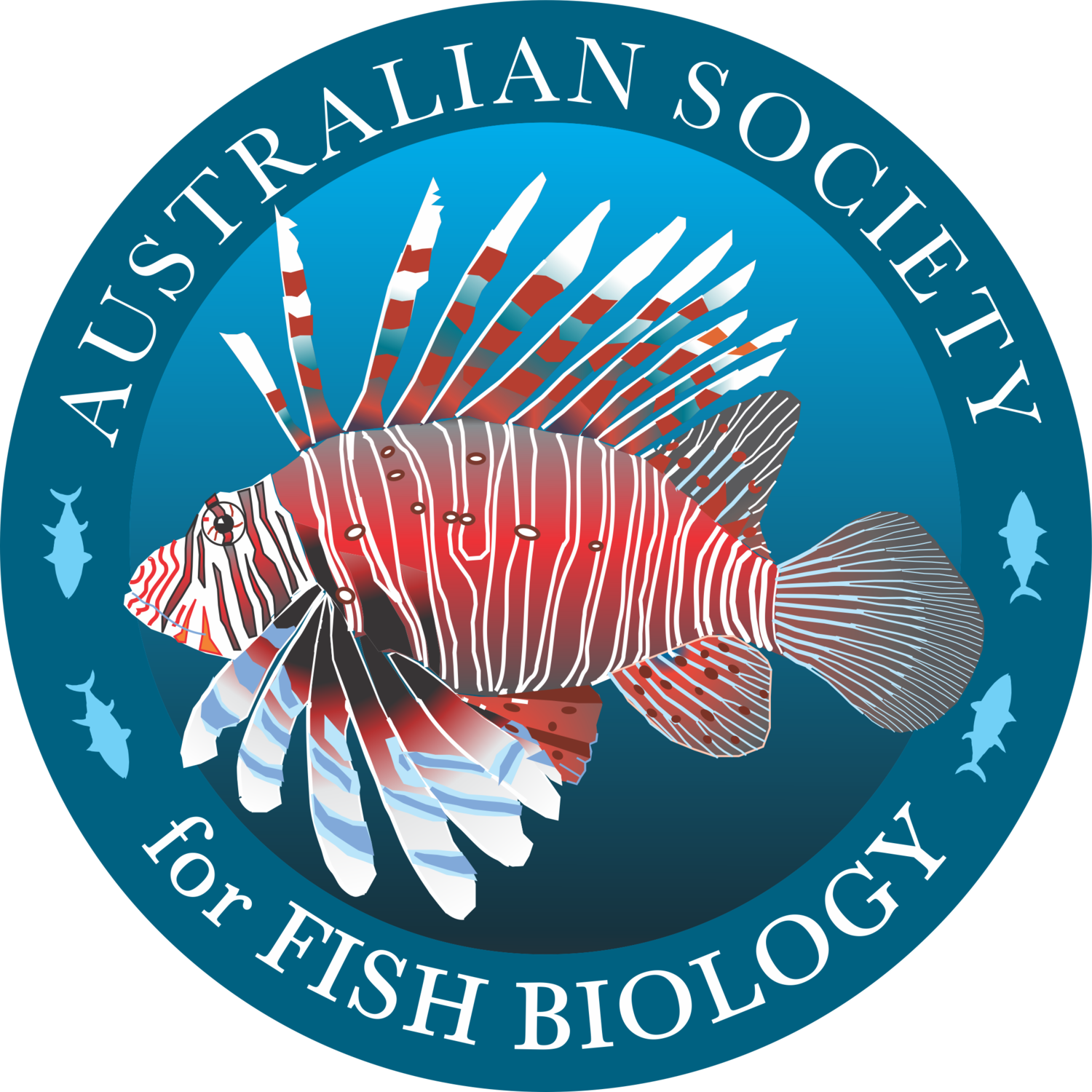On the line with… Nick Boucher
Nick Boucher is a fisheries policy officer in Tasmania and the editor of ASFB’s biannual newsletter. We spoke with him about the importance of fisheries management and the joys of being underwater.
Nick Boucher scuba diving at Port Stephens, NSW.
Nick, what originally sparked your interest in fish and fisheries?
As a young child, I always loved the water. I loved swimming and kayaking and any activities on or near water. But my absolute favourite activity was snorkelling, and, as I got older, scuba diving. This was because I could see all these amazing creatures that I couldn’t otherwise. Being underwater really feels like being on another planet at times.
What does your current job involve? Can you describe a typical day as a fisheries manager?
Fisheries managers in Tasmania have responsibility for policy development and operational management administration, so lots of communication and problem solving.
Nick with a shark-eaten Spanish mackerel, in the Torres Strait.
A large amount of time is spent on communicating with stakeholders, including scientists, fishers from multiple sectors, and the general public. The communication is often about understanding stock assessment data, fishing business concerns, and trying to provide government with good advice on how to keep fish stocks sustainable while delivering the maximum social and economic benefits from the fishery. A lot of time is spent on processes to explain what decisions have been made, as well as why those decisions have been made, to stakeholders, to ensure that the decisions are transparent and defendable.
Fisheries managers are also always working on ways to solve problems in the fishery, or to fine-tune management to get better outcomes from the fishery for stakeholders and the Tasmanian Community. Fisheries managers are also always working on ways to solve problems in the fishery, or to tweak management to get better outcomes from the fishery for stakeholders.
You are also the hard-working (but mostly unsung) editor of the ASFB newsletter, Lateral Lines. What do you enjoy about this role?
I really love getting to read what everyone has been up to all around the country, and chatting to contributors about their work. Australia and New Zealand are so lucky to have so many passionate and intelligent people working on so many exciting and important projects in the fishy world, and that I get to read it a little bit earlier than most people makes me feel a little bit special.
Inspecting a wobbegong during a dive off Cook Island, NSW.
You spend much of your spare time wearing scuba gear. What was your most memorable dive?
It's hard to put it down to just one! I've been lucky enough to do hundreds of dives in Australia and even a few overseas. One of my most memorable dives would definitely have to be Wolf Rock, off Rainbow Beach in Queensland. It's a big critter dive, with the main attraction being large numbers of critically endangered grey nurse sharks. It's the only known spot on the east coast where you can reliably see pregnant female grey nurse sharks. It's also a site that attracts turtles, eagle rays, Queensland groper and any number of big pelagics that happen to be cruising past. I would highly recommend visiting if you are a scuba diver.
Nick swimming with a grey nurse shark at Wolf Rock, Queensland.
Probably the other most memorable dive would be diving with a whale shark out of Koh Samui in Thailand. Another great spot for when borders open!
In your opinion, what Australian fish species doesn’t get enough appreciation by the wider public?
Probably my favourite fish to dive with is the blue groper. They definitely act like puppy dogs around scuba divers, even bumping and poking me on a few dives to get my attention. They seem to be a very intelligent and playful fish, as well as being beautiful to look at. They're seen frequently all down the New South Wales coast, and in and around Brisbane dive sites, too.
"On the line" is a regular series featuring interviews with ASFB members. Nick Boucher is a Wild Fisheries Policy Officer with Tasmania's Department of Primary Industries, Parks, Water and Environment, and the editor of Lateral Lines, the ASFB newsletter.




